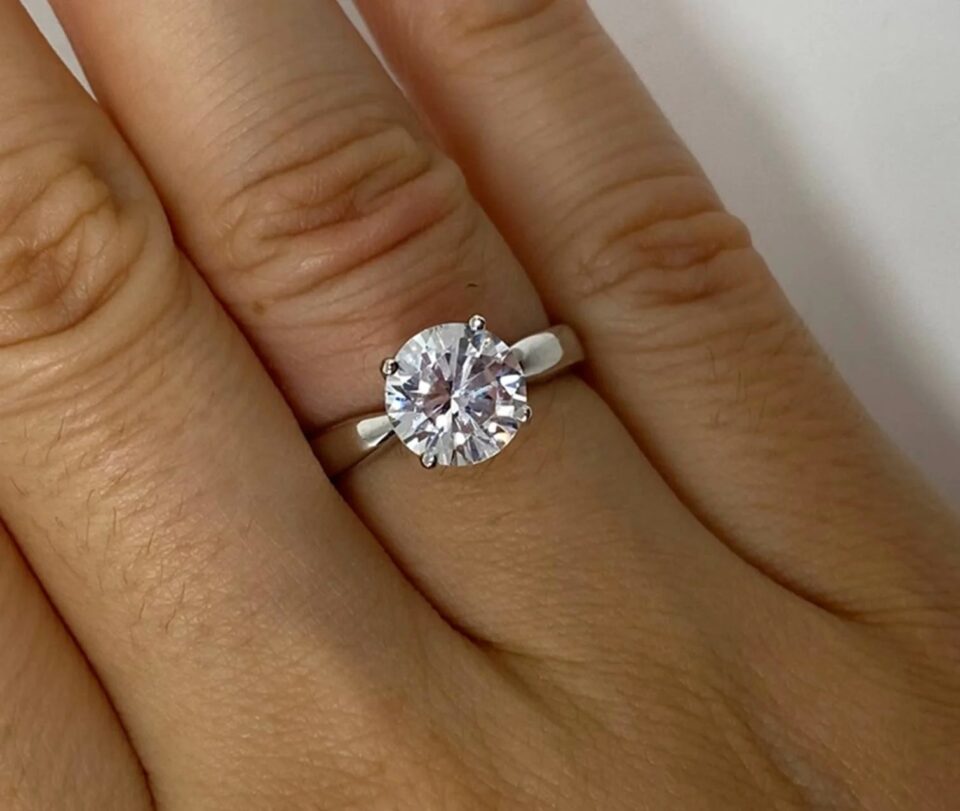Simulated diamonds, also known as simulated diamonds, have steadily increased in popularity in recent years, making them a competitive alternative to mined diamonds. Natural diamonds are more valuable than synthetic ones because of their scarcity and the extreme rarity of the circumstances needed to produce them. However, man-made diamonds, often called simulated diamonds, have a number of benefits that might encourage you to invest in them instead. Here are a few arguments in favour of buying jewelery using simulated diamonds rather than natural ones:
Simulated diamonds are very reasonably priced
One of the main reasons for the considerable price difference is that the manufacture of synthetic diamonds does not need several years, unlike the production of genuine diamonds. Considering the higher quality of the stones they contain, the price difference of 30–40% from mined or natural diamonds is a steal.
The Appearance of Natural and Man-Made Diamonds Is Identical
Many may not know that it takes practise to tell the difference between a real diamond and a fake one. Due to the similarities in their chemical structures, not even the most experienced gemologists can tell the two apart without extensive testing.
Fake diamonds are safer for the planet than genuine ones
Doing some research will reveal that diamond mining might have severe consequences for the local ecology. Conversely, lab-created synthetic diamonds have little to no environmental impact since they need much less resources in their production.
Artificial diamonds Use with any and all possibilities
Imitation diamonds are perfect for regular use since they draw attention to your individuality and allow you to be yourself no matter what you’re doing. They are also incredibly durable and easy to maintain. For a formal evening event, nothing completes your outfit like a classic pair of white stud earrings. Diamond hoop earrings or a pendant in the form of a souffle pink are another option for adding a dash of colour to your ensemble. Therefore, if you want jewellery that has the look and feel of true diamonds but at a more inexpensive price and a trendy cut, simulated diamonds are the ideal choice to go with.
Imitations stand in for conflict-free diamonds
Concerns concerning the ethics of natural diamond mining are common. It is becoming more difficult to address the challenge posed by the humanitarian and environmental consequences of the methods used to harvest natural diamonds. Since more and more consumers are inquiring about the origins of the natural diamonds they purchase, retailers are now obligated to provide a statement to that effect.
There is no space for controversy about the origin of synthetic diamonds since they are made by highly qualified and certified personnel, making them less controversial than natural diamonds.
Even while not everyone would be thrilled to give their future spouses engagement rings created from lab-grown diamonds, some may find that they are a more cheap option that they can enjoy guilt-free.
Think about the available storage area
The greater the carat weight of the imitation diamond put in the ring, the more easily you may be convinced that buying it is the better financial choice. The only foolproof way to draw attention to the fact that the diamond you are using is a fake is to make it seem out of place in the setting in which it is being worn.
Conclusion
Finally, you should do all in your ability to shape the stone so that it fits your partner’s finger. Wearing an engagement ring made for little fingers might help make your fingers seem longer, regardless of how wide yours really are. Using stones with an oval, pear, or marquise cut will make your finger seem longer. Short-handed people may seem to have longer fingers if they wear rings set with square or rectangular emerald-cut stones.

